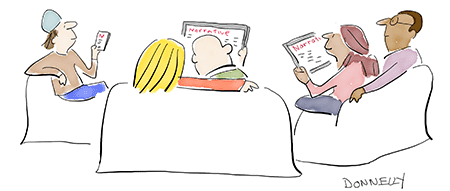It was 1987, the spring of my first college year in California. I was still a teenager, and what I would make of myself in the world preoccupied my waking hours. In a move that made no rational sense to anyone, including myself, I was majoring in art history, a topic I knew nothing about. But somehow art was the thing I wanted most to understand. So in I jumped, a girl raised on the high plains of Montana, where our town’s one museum was dedicated to the work of local cowboy artist Charlie Russell.
That spring I was thrilled that my courses had entered the twentieth century at last, including a class dedicated to modern American art. After three thousand years of gods and nudes and kings and saints and boating parties on the Seine, I was finally comfortable. The class began with Regionalist painters like Thomas Hart Benton and Grant Wood, whose homey depictions reminded me of the paintings I’d grown up with.
The course was taught by my only female professor, a visiting scholar from Texas, who had long, untamed red hair and wore men’s white shirts and jeans with cowboy boots. She walked with a cane and spoke in the flat, barely discernible drawl of the Texas panhandle. I adored her.
So when she said, Hey, now, this is why abstraction is great and beautiful and true, I wrote it down in my notebook, and I believed it. For the first time I experienced the artworks lit up on the big screens in that vast auditorium not as signifiers of this time period or that artist but as objects of value in themselves, as sometimes beautiful—and sometimes failed—expressions of singular human beings in communication with . . . well, with all humanity. With me, even, a pale, clueless woman-child with dyed black hair and a newly pierced nose. I fairly swooned with the romance of it.
And yet, there was something. Some niggle I couldn’t quite put my finger on. Some itch or need I could not locate clearly enough to ameliorate.



